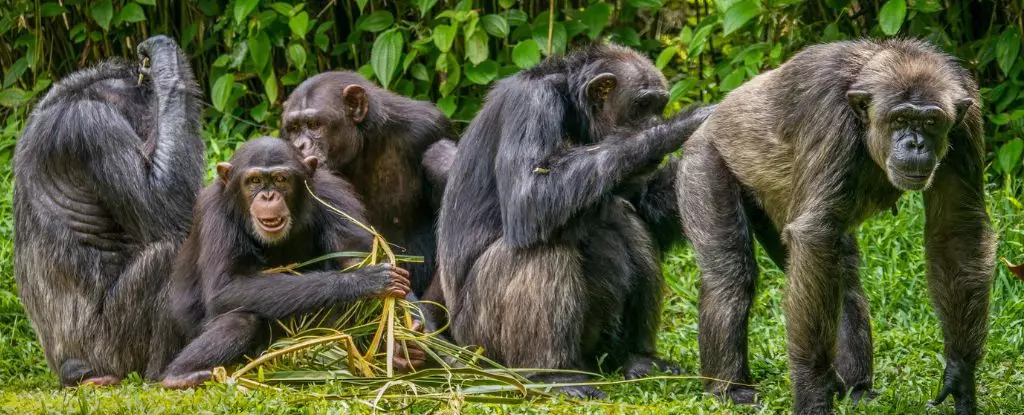Recent insights into primate behavior have unveiled a surprisingly overlooked aspect of their social dynamics: synchronized urination. A groundbreaking study involving 20 captive chimpanzees (Pan troglodytes) has revealed that the act of urinating may indeed have social implications akin to those previously noted in behaviors such as grooming and play. The researchers, led by primatologist Ena Onishi from Kyoto University, discovered that when one chimp in a group initiates urination, others are quick to follow—particularly if the initiating individual holds a dominant position within the social hierarchy. This first-of-its-kind research illuminates how a seemingly mundane biological function can reflect deeper social structures and relationships among primates.
The study conducted at the Kumamoto Sanctuary in Japan monitored four groups of chimpanzees over an exhaustive 604 hours. The researchers meticulously recorded occurrences of synchronized urination, which they defined as instances where multiple individuals pee within a 60-second window. What emerged was an intriguing pattern: the chimps were notably more likely to urinate simultaneously when they were physically close to one another—about three meters apart. This observation points towards the idea of social contagion, where one chimp’s decision to urinate prompts similar responses from others nearby.
Interestingly, the reasons behind the synchronized urination extend beyond mere proximity or environmental stimuli, such as feeding or outdoor access. The study also delved into the leadership dynamics within the chimp community. Notably, lower-ranking individuals often followed the lead of their higher-ranking peers in this biological activity. This finding raises important questions about the implications of social status influencing behavior; it suggests that dominance can play a critical role not only in more overt social activities but also in fundamental biological functions.
The research team also aimed to understand how the quality of social relationships among the chimpanzees influenced their urination behaviors. Surprisingly, the findings indicated that chimps that engaged in frequent grooming together did not necessarily urinate together. This deviation from expectations provoked further inquiry regarding the social dynamics at play. Unlike contagious yawning, where social closeness often enhances the likelihood of mimicking behavior, urination displayed a clearer connection to hierarchy rather than intimacy or social bonding.
As Onishi elucidates, this was an unexpected twist that complicates our understanding of how social structures impact behavior. The research does not discard the influence of social bonds entirely; instead, it highlights the complexity of primate interactions, where the power dynamics may supersede traditional notions of friendship or companionship.
The implications of these findings stretch beyond the world of chimpanzees. A prior study from 2020 emphasized that human and animal urination behaviors have largely remained understudied despite their potential impact on group dynamics and hygiene. The phenomenon of synchronized urination in chimpanzees invites us to reconsider how social environments shape even the most routine actions in both animal and human contexts.
Primatologist Shinya Yamamoto from Kyoto University remarked on the significance of this research, hinting at profound interpretations—this behavior might not only facilitate community cohesion but may also act as a subtle method of reinforcing social hierarchies and leadership roles. In recognizing that such a natural activity is influenced by social structures, researchers are urged to extend their inquiries into how other day-to-day behaviors may similarly reflect and reinforce social orders across species.
The study of synchronized urination among chimpanzees offers new avenues for exploring the intricate social lives of primates. By recognizing that even the basic act of urination is bound by social norms and hierarchies, we enhance our understanding of primate behavior and community dynamics. As research continues to evolve, it is crucial to appreciate the multifaceted nature of interactions that govern both animal and human societies—reminding us that even the simplest behaviors often have complexity under the surface.


Leave a Reply